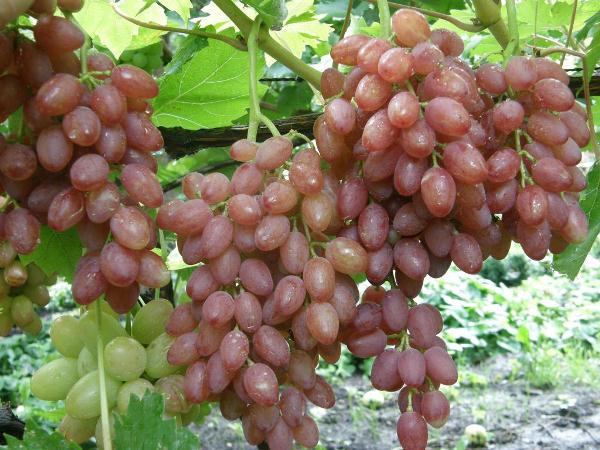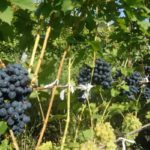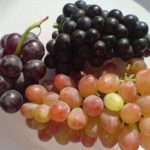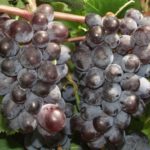Grapes - the most delicate juicy berries, sweet, aromatic, with a rich taste - a storehouse of nutrients and vitamins, regardless of the form in which they are used - fresh or dried. These little berries, gathered in delicious bunches, For thousands of years, it has been used as a raw material for wines, champagnes, and cognacs of various varieties — refined aged drinks and young sparkling beverages. In this review, we consider the most popular grape varieties without pits.
Table of contents
Benefits of grape raisin
Perhaps the grape - one of the most common crops on earth. There is no country where they would not try to grow it on an industrial scale or on its own garden plot. Maybe that's why, despite the fact that in nature there are more 600 varieties of wine berries, breeders are still breeding new cultural and hybrid species.
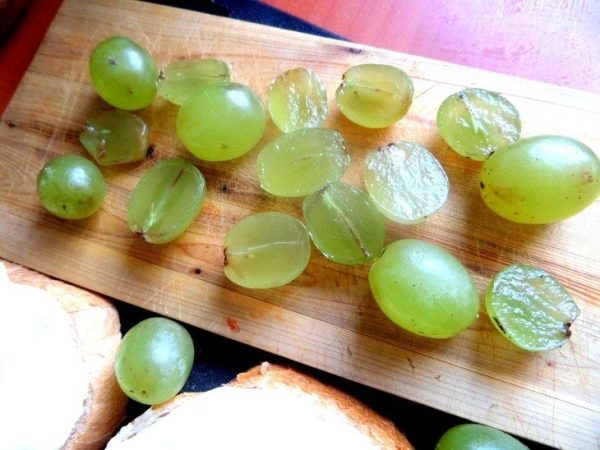
Boneless grapes are particularly popular. This is not surprising - it is much more pleasant to see through a juicy berry, when small, hard bones do not interfere with you. In addition, it is these berries are most suitable for drying and obtaining raisins.
The most ancient known types of seedless grapes are kishmish and korinka. It is customary to add the word kishmish to modern ones in order to emphasize that there is no bone in the fruit. Korinka is a fine black very sweet grape of Corinthian origin, and even now a raisin research institute functions in Greece (Piraeus).
It is the seedless species used for pollination of other varieties in order to obtain new hybrids. Berries of any seedless species have an ideal combination of natural acids and sugars, have a rich sweet taste, unique aroma and thin peel. They are suitable for fresh consumption, dried in the form of raisins, making the most exquisite wines and brandies.
How does reproduction occur
Indeed, how does this grape reproduce if there are no seeds in it? Almost all known boneless species are bred by breeders. thanks to the interbreeding of natural types of kishmish - Black Monukka and Thompson. Each of them has its own individual characteristics: the shape of the berries, the color, size and size of the seeds. Why is there no bone in raisins? The fact is that the bones are not completely missing, they are simply underdeveloped. In the Kisha Misha species, they can be very small or subtle, soft, and also differ in quantity.
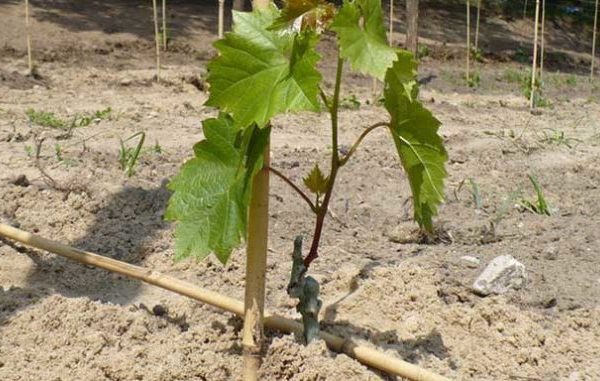
The lack of seeds in the grapes is a genetic feature, specially pledged by breeders when breeding new varieties.
Breeders have even learned to grow new varieties of seedless grapes from underdeveloped seeds. But reproduction with preservation of all genetic features and qualities varieties are only possible with the vegetative method.
Kishmish is fertilized with the help of pollination, therefore there are traces of seeds in the berries, although their development stops at an early stage. The ovary of cinnamon occurs WITHOUT POLLUTION, and they do not have a bone at all.
Most common seedless varieties
These varieties differ in the size and degree of maturity of the seed, frost resistance, maturity. Consider the most popular of them and give their names.
Kishmish
There are a lot of varieties of raisins, but gardeners prefer mostly traditional, time-tested varieties.
Radiant
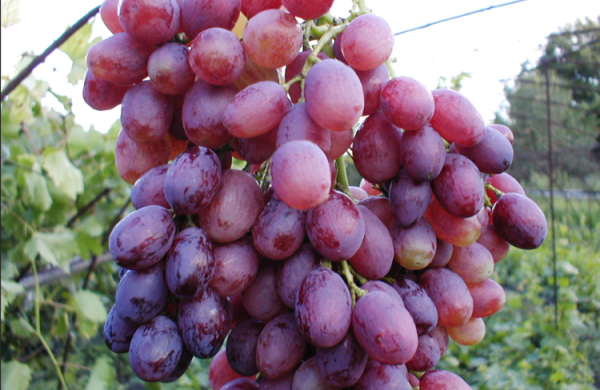
Mid-ripening (ripens in 130-135 days), the vine is developed, medium to high-growth.The berries are small - 2g, elongated, pink in color, the pulp is juicy, fleshy, with a rich nutmeg aroma, for universal use. Forms a bunch up 2 kg weight. Well stored, transported, tolerates low temperatures.
Zaporizhia
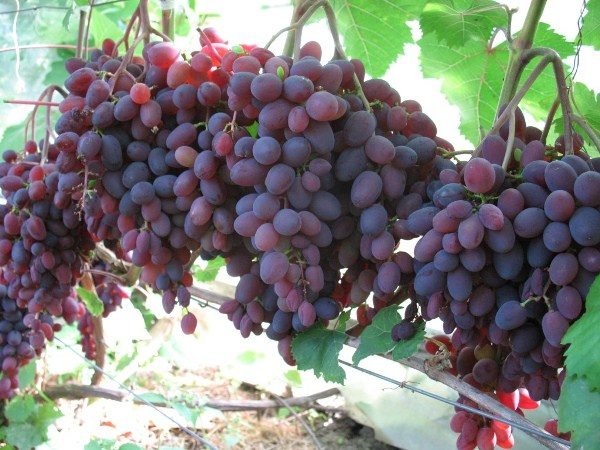
Early ripe table grapes, berries reddish-purple, oval, rich taste, very fleshy juicy berries. Vine has an increased resistance to frost and disease.
The black
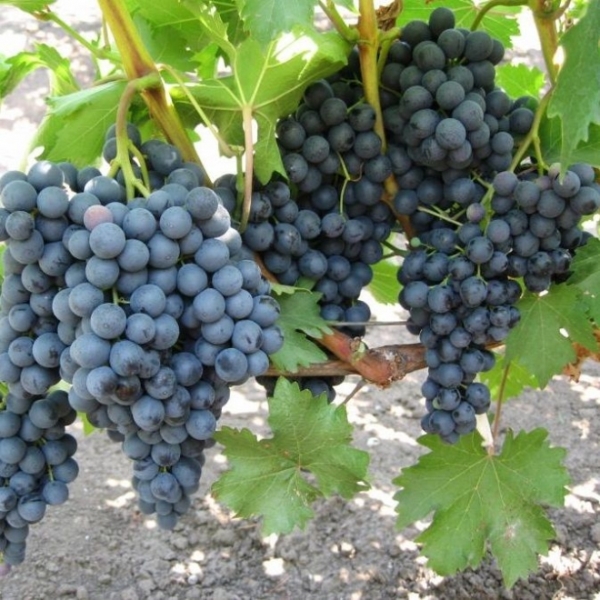
One of the ancient varieties, with all the usual qualities, Black grapes have special taste and beneficial properties: dark color indicates a huge amount of antioxidants, the use of which for the body is not overestimated. Anthocyanins are able to slow the growth of cancer cells, inflammatory processes, facilitate the course of diabetes mellitus (recommended for patients with diabetes, as it has a low glycemic level), prevent the development of fatty layers. High-yielding and cold-resistant, but requires careful maintenance.
Kesha
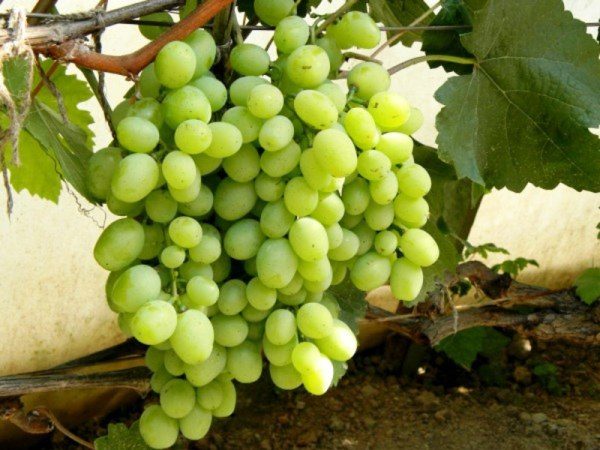
The culture of early ripening, up to 115 days, berries weighing 3-4g, rounded shape, juicy, tender flesh, peel of medium density.Ripe berries from amber color with a brownish tinge to greenish-yellow. Brushes tight, small - 300-400 g, but the productivity of bushes is high - up to 6,5 kg
Kenadis
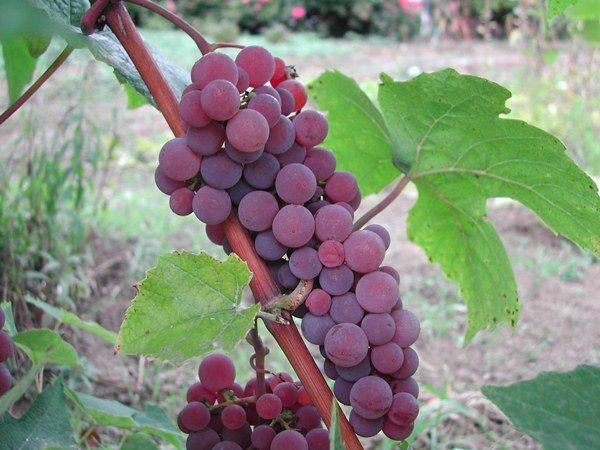
High yielding the most frost-free of beskostochkovyh (can withstand t -30about), Table grapes, perfectly stored for up to 4 months, most often used for making juices due to the light and isabel taste. The berries are pink, with the transition to red.
Himrod
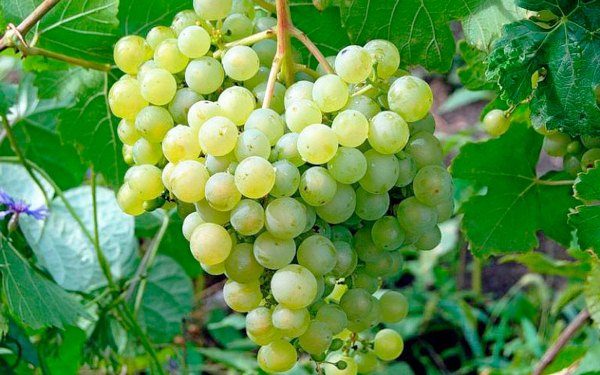
Early medium ripening, berries are small, pale yellow. The specific taste and aroma allows its use for the manufacture of white wines. Resistant to frost and fungal diseases.
Jupiter, Neptune, Mars
Berries do not differ much from each other, color - purple-red, large, fleshy fruit, fragrant. Plants are fertile and cold-resistant, they are not affected by fungal diseases and gray mold. Jupiter is made from aromatic, sweet red wines.
- Neptune
- Mars
- Jupiter
Unpretentiousness, disease resistance, cold tolerance, high yield, impeccable taste and, most importantly, lack of pits - optimal set of the best qualities of grapes.That is why seedless varieties deserve the attention of gardeners and consumers.
